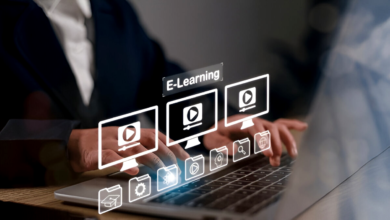How to Make a Difference in Educational Access this Year

Have you ever wondered why some students excel while others struggle to access basic educational resources? The key lies in educational access, a fundamental right that shapes our future leaders, thinkers, and innovators. This article delves into the strategies you can adopt to significantly impact educational access this year.
Understanding the Current Educational Landscape
Understanding the current educational landscape requires a nuanced examination of various factors, trends, and challenges shaping the way students learn, educators teach, and institutions operate. As we navigate through an era marked by technological advancements, socio-economic disparities, and evolving pedagogical approaches, it becomes essential to analyze the complexities and dynamics influencing the educational ecosystem. Let’s delve into a comprehensive understanding of the current educational landscape:
Digital Transformation and Technology Integration
The rapid advancement of technology has catalyzed a digital transformation in the educational landscape, revolutionizing teaching and learning methodologies. From online learning platforms and digital resources to interactive tools and virtual classrooms, technology has created new opportunities for educators and students to engage, collaborate, and innovate.
However, the digital divide remains a significant challenge, limiting access to technology and digital resources for marginalized communities and underserved populations.
Read More: What is the Use of Financial Education?
Diverse Learning Environments and Inclusive Education
The emphasis on creating diverse learning environments and promoting inclusive education practices has gained momentum, recognizing the importance of catering to students’ diverse needs, backgrounds, and abilities.
Educational institutions are adopting inclusive curriculum, implementing differentiated instruction, and fostering supportive environments where every student has equal opportunities to succeed. Despite progress, disparities in access to quality education persist, necessitating continued efforts to address systemic barriers and inequities.
Globalization and Cultural Integration
Globalization has profoundly impacted the educational landscape, fostering cultural integration, collaboration, and exchange among students, educators, and institutions worldwide. International partnerships, exchange programs, and cross-cultural initiatives enable individuals to explore global perspectives, broaden their horizons, and develop intercultural competence.
However, cultural differences, language barriers, and socio-political challenges pose complexities and considerations that institutions must navigate effectively to promote mutual understanding and respect.
Lifelong Learning and Professional Development
The emphasis on lifelong learning and professional development has become increasingly prevalent, recognizing the need for individuals to acquire new skills, adapt to changing environments, and pursue continuous growth and improvement.
Educational institutions, employers, and policymakers are collaborating to design flexible learning pathways, provide relevant training opportunities, and support individuals’ career aspirations. However, access to affordable education, quality resources, and relevant opportunities remains a concern for many individuals seeking to enhance their skills and competencies.
Socio-Economic Factors and Educational Equity
Socio-economic factors significantly influence educational access, attainment, and outcomes, highlighting the pervasive disparities and inequities that exist within the educational landscape.
Economic disparities, resource allocation, funding structures, and policy decisions profoundly impact students’ opportunities, experiences, and success rates. Addressing socio-economic barriers, expanding access to educational resources, and advocating for equitable policies are essential steps towards creating a more inclusive and accessible educational system.
Emerging Trends and Future Directions
As we navigate the complexities of the current educational landscape, several emerging trends and future directions warrant consideration and exploration.
Innovations in educational technology, personalized learning experiences, competency-based education, and holistic approaches to student development offer promising opportunities to transform the way we teach, learn, and evaluate educational success.
However, embracing change, fostering collaboration, and prioritizing student-centered approaches are essential for navigating the uncertainties and opportunities that lie ahead.
Strategies to Improve Educational Access
Advocacy and Policy Changes
Engaging in advocacy and lobbying for policy changes can pave the way for equitable educational opportunities. By collaborating with policymakers and stakeholders, you can influence decisions that prioritize educational access for marginalized communities.
Collaboration with Local Communities
Building strong partnerships with local communities can create a supportive ecosystem for students. Whether it’s through community outreach programs or collaborative initiatives, working together can amplify the impact of educational access efforts.
Leveraging Technology for Remote Learning
Embracing technology enables students to access quality education regardless of their geographical location. By investing in digital infrastructure and online learning platforms, we can ensure that every student has the tools they need to succeed.
Scholarships and Financial Aid Opportunities
Financial constraints should never limit a student’s potential. By establishing scholarships and financial aid programs, we can alleviate the financial burden on students and their families, opening doors to higher education and better opportunities.
Creating Mentorship Programs
Mentorship plays a pivotal role in guiding students towards academic success and personal growth. By connecting students with mentors who share their experiences and insights, we can inspire the next generation of leaders and change-makers.
The Impact of Volunteering and Mentorship
Volunteering and mentorship play pivotal roles in shaping the educational landscape, fostering personal growth, and empowering individuals to achieve their full potential. By dedicating time, skills, and resources to support students and communities, volunteers and mentors create lasting impacts that transcend traditional educational boundaries. Let’s explore the profound effects of volunteering and mentorship on individuals and communities:
Empowering Students Through Guidance and Support
Mentorship provides students with invaluable guidance, support, and encouragement, helping them navigate educational challenges and pursue their aspirations. Mentors serve as role models, sharing insights, experiences, and knowledge that empower students to overcome obstacles, develop essential skills, and cultivate a growth mindset.
Building Meaningful Relationships and Networks
Volunteering and mentorship initiatives foster meaningful relationships and networks that enrich individuals’ lives and strengthen communities. By connecting students with mentors and volunteers who share their interests, goals, and values, we create supportive ecosystems where individuals can collaborate, learn from one another, and forge lifelong connections.
Promoting Personal and Professional Development
Engaging in volunteering and mentorship activities promotes personal and professional development by enhancing individuals’ skills, knowledge, and confidence. Volunteers and mentors provide opportunities for students to explore their interests, develop critical thinking skills, and acquire real-world experience through hands-on activities, projects, and collaborative endeavors.
Fostering Civic Engagement and Social Responsibility
Volunteering and mentorship cultivate a sense of civic engagement and social responsibility among individuals and communities. By participating in meaningful initiatives, individuals contribute to positive change, address community needs, and create inclusive environments where everyone has equal opportunities to succeed.
Inspiring Positive Change and Innovation
Volunteering and mentorship inspire positive change and innovation by encouraging individuals to challenge the status quo, explore new ideas, and pursue ambitious goals. Mentors and volunteers serve as catalysts for innovation, creativity, and entrepreneurship, fostering environments where individuals can experiment, iterate, and transform their ideas into tangible outcomes.
Creating Sustainable Impact and Lasting Legacy
Volunteering and mentorship create sustainable impact and lasting legacies that transcend generations. By investing in individuals’ education, development, and well-being, volunteers and mentors contribute to building resilient communities, fostering intergenerational connections, and ensuring a brighter future for all.
Enhancing Emotional and Social Well-being
Engaging in volunteering and mentorship activities enhances individuals’ emotional and social well-being by fostering a sense of belonging, connection, and purpose. By building supportive relationships, sharing experiences, and celebrating achievements, volunteers and mentors create nurturing environments where individuals can thrive, flourish, and contribute to collective success.
Read More: 5 Strategies for Early Learning Education
Conclusion
Navigating the multifaceted realm of educational access, digital transformation, inclusivity, and lifelong learning reveals a landscape rife with challenges, opportunities, and complexities. As we strive to create equitable educational environments that foster growth, innovation, and empowerment, it becomes imperative to adopt a holistic approach that addresses systemic barriers, leverages technological advancements, and prioritizes individual needs.
The interconnected nature of the current educational landscape necessitates collaboration among educators, policymakers, stakeholders, and communities to develop strategies, implement reforms, and create supportive ecosystems that enable all students to thrive. By embracing diversity, promoting inclusivity, and fostering a culture of lifelong learning and mentorship, we can cultivate environments where individuals have equal opportunities to pursue their aspirations, contribute to society, and shape a brighter future for themselves and future generations.
As we reflect on the strategies, insights, and perspectives shared throughout this exploration, it becomes evident that educational access is not merely a goal but a fundamental right and catalyst for change. By investing in individuals’ education, development, and well-being, we lay the foundation for building resilient communities, fostering innovation, and creating a more equitable and prosperous society for all.
FAQs
Why is educational access important?
Educational access is crucial because it provides equal opportunities for individuals to achieve their full potential, regardless of their background or circumstances.
How can technology bridge educational gaps?
Technology enables students to access resources and learning opportunities remotely, breaking down geographical barriers and providing equitable access to education.
What role does mentorship play in improving educational access?
Mentorship provides students with guidance, support, and resources to navigate educational challenges, empowering them to achieve academic success and personal growth.
How can I get involved in improving educational access?
You can get involved by volunteering your time, skills, and resources to educational initiatives, advocating for policy changes, and supporting organizations dedicated to improving educational access.
What are some practical steps to improve educational access in my community?
Some practical steps include collaborating with local schools and organizations, establishing mentorship programs, providing scholarships and financial aid, and leveraging technology for remote learning opportunities.







